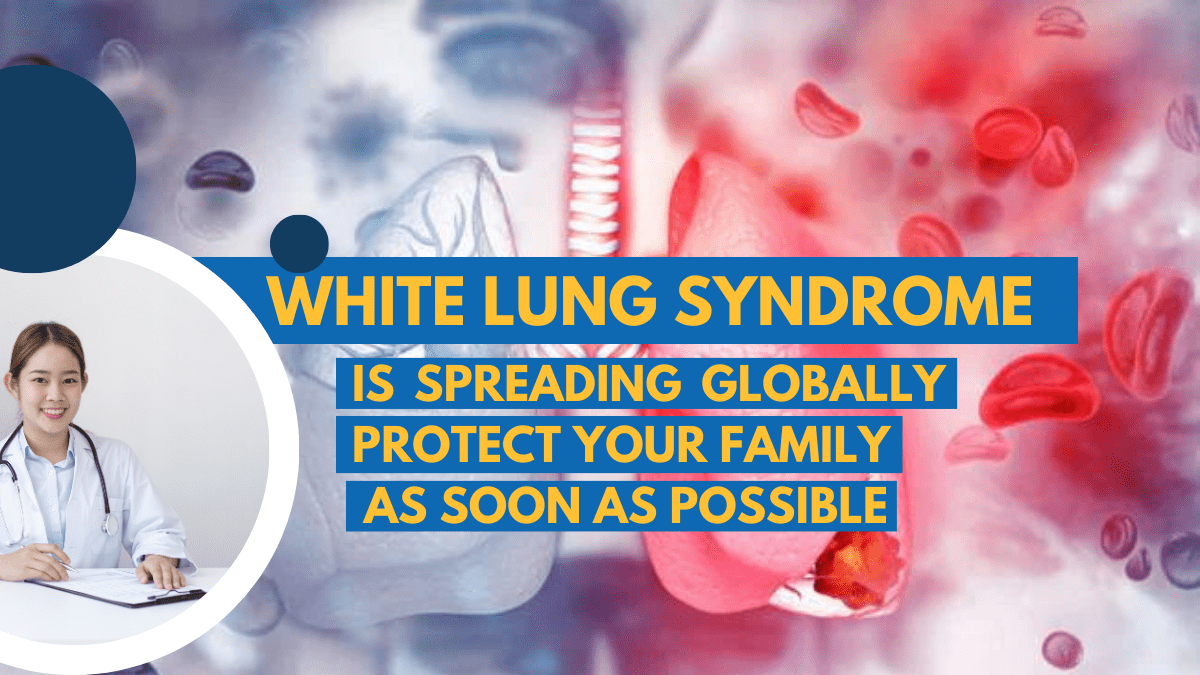Contents
What is White Lung Syndrome?
“As white lung syndrome continues to spread globally, it’s crucial to arm yourself with knowledge on to protect yourself. This comprehensive guide will provide you with valuable insights and practical tips to stay safe in the face of this concerning health issue. From understanding the symptoms to implementing effective preventive measures, we’ve got you covered. Let’s dive in!”
White lung syndrome, also known as pneumonitis or hypersensitivity pneumonitis, is an inflammatory lung disease that has become a growing concern worldwide. It is caused by the inhalation of various substances such as mold, dust, and chemicals, triggering an immune response and inflammation in the lungs. Prolonged exposure to these substances can lead to serious respiratory issues and long-term lung damage.

Recognizing the Symptoms (H2)
Identifying the early signs of white lung syndrome is crucial for seeking prompt medical attention. While symptoms may vary among individuals, there are common indicators to watch out for, including:
Dry Cough and Shortness of Breath (H3)
- One of the primary symptoms of white lung syndrome is a persistent, dry cough.
- Many affected individuals also experience shortness of breath, which can worsen with physical exertion.
Fatigue and General Malaise (H3)
- White lung syndrome often presents with fatigue and a feeling of general malaise.
- The ongoing inflammation in the lungs can lead to a decrease in energy levels and overall well-being.
Chest Tightness and Discomfort (H3)
- Another symptom to be aware of is chest tightness and discomfort.
- The inflammation and immune response can cause a feeling of pressure or constriction in the chest area.
If you experience any of these symptoms or suspect you may have been exposed to potential triggers, it is essential to consult a healthcare professional for a proper diagnosis.
Preventive Measures for White Lung Syndrome (H2)
Protecting yourself from white lung syndrome involves implementing preventive measures to minimize exposure to the substances that can trigger the condition. Here are some effective strategies to consider:
Identify Potential Triggers (H3)
- The first step in prevention is identifying potential triggers in your environment.
- Factors such as mold, dust, and chemicals can be common culprits.
- Conduct thorough inspections of your living and working spaces to identify any potential sources of exposure.
IPL Auction 2024: Teams Release Complete List of Players74 / 100
Proper Ventilation (H3)
- Ensuring good ventilation is crucial in reducing the concentration of airborne substances.
- Install and maintain ventilation systems in your home, workplace, and other enclosed spaces to improve air quality.
- Regularly clean and maintain air filters to prevent the buildup of harmful particles.
Use Personal Protective Equipment (H3)
- When working in environments where exposure to triggering substances is unavoidable, always use appropriate personal protective equipment (PPE).
- This may include masks, gloves, and goggles to minimize direct contact and inhalation of potential triggers.
Implement Good Hygiene Practices (H3)
- Practicing good hygiene can help reduce the risk of exposure to substances that can trigger white lung syndrome.
- Wash your hands regularly, especially after handling potentially contaminated materials.
- Avoid touching your face, as this can transfer particles from your hands to your respiratory system.
Regular Cleaning and Maintenance (H3)
- Regular cleaning and maintenance of your living and working spaces are crucial to minimize the presence of triggers.
- Keep your surroundings clean and free of mold, dust, and other potential irritants.
- Pay particular attention to areas prone to moisture, as they can be breeding grounds for mold.
Conclusion
“As white lung syndrome continues to pose a global health concern, taking proactive steps to protect yourself is paramount. By recognizing the symptoms, implementing preventive measures, and maintaining good hygiene practices, you can significantly reduce the risk of developing this debilitating condition. Stay informed, stay vigilant, and prioritize your respiratory health. Together, we can combat the spread of white lung syndrome.”
Remember, if you believe you may have been exposed to potential triggers or are experiencing symptoms related to white lung syndrome, consult a healthcare professional for proper diagnosis and treatment.
External Links:

